
1 Geographic distribution
The language community is based in Namasia township (Chinese transcription: 那瑪夏區 namaxia) and mainly in the village of Takanua/Tanganua (Chinese transcription: 達卡努瓦 dakanuwa). The old governmental name for these villages together used to be Maya village, which was replaced in 1958 by the name Sanmin village, referring to three sub-villages with Kanakanavu and Bunun inhabitants. Old records from the Japanese colonial period say that the original population used to live in scattered settlements in and near the valley (Lin 2007: 166 [map]; 49). In order to have more control over the aboriginal population in that region, the Japanese colonial government forced the Kanakanavu population to move to main villages in the 1920s. According to our main informant, Mo’o Ka’angena, his family was urged to move from Cipaku to Takanua when he was a young child. After the Japanese rulers left in the post-war period, the people sometimes moved back to their old settlements, but in 1978 the Taiwanese government introduced a stricter settlement policy and the people were again obliged to set up their homes in the main villages (Lin 2007:49). There are still some houses at the old settlement sites which are often used as second homes.
2 Political units
Taiwan has several administrative divisions for its cities and counties. There is a hierarchy of up to 5 levels. On the highest level there is a distinction between 1. Special municipalities, 2. Provincial cities and 3. Counties. Special municipalities and provincial cities divide only into districts and, on a lower level, into villages.
The Takanua village belongs to the special municipality of Gaoxiong City. Gaoxiong has 38 districts and the Takanua village is situated in Namasia/Namaxia district.
Takanua is part of a bigger village unit named Sanmin (Chinese 三民) which has three sub-villages. The names were given by the Chinese and are: Minzu(民族), Minchuan(民權) and Minsheng(民生). Minsheng is the Chinese name for the Takanua village.
3 Geographic features
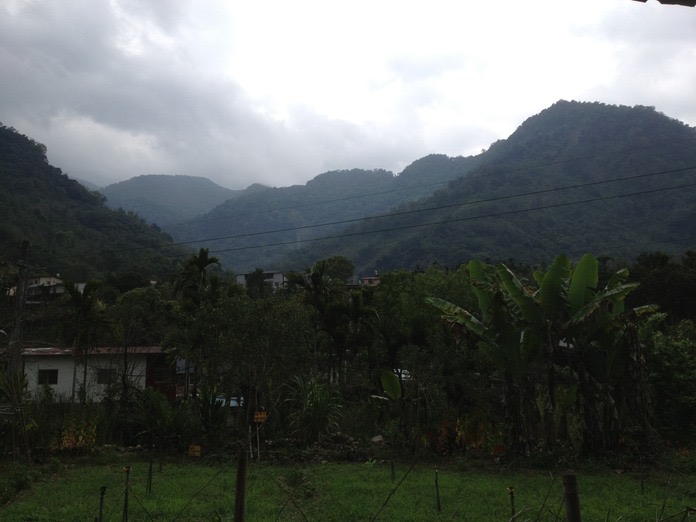
The Takanua village is located at the lower Alishan mountain region in the valley of the Cakuran river. The population density is quite low. Namasia township has only some villages in very remote areas in the valleys around the Alishan mountain region. The nearest neighbor village is at least 5 km away. The area is mountainous, a wood mountain range rather than high mountains. However, getting to the area has not been easy recently, since Taifun Morakot devastated the region in 2009. There is just one main road from the next bigger settlement in Qishan, and many parts of that road are destroyed and now under construction.
4 Coordinates
The altitude in that region reaches from approximately 600-710 meters above sea level to almost 2,500 meters on the peak of Mount Xinwangling (Lin 2007:34,40). The coordinates are +23.273519, +120.715413.
5 Ethnic affiliation of speech community
The ethnic group of the Kanakanavu speakers belongs to the Taiwanese aboriginal group. According to Tsai (2010) it is not very easy to define the genetic status[1] of the main ethnic groups in Taiwan. The ancestors of today’s aborigines on Taiwan were the native population of Taiwan, living on the islands for more than 5000 years (Bellwood 1997) before immigration started from Chinese mainland in the 16thcentury. The immigrants were mainly Hakka people or people from the southern provinces of China. Due to intermarriages between the groups, it is impossible to define a ‘pure’ genetic status for these groups, but there are still differences in ethnicity today. The greatest differences among these groups, culturally and linguistically, exist between the Sinitic groups and the aboriginal groups.
In numbers, the aboriginal population makes up around 2% of the total population on the Taiwanese islands. These 500,000 aboriginal people are divided into less than 20 groups; fourteen of them are officially recognized. There are large differences in terms of the size of these groups: the biggest group, the Amis people, is about 180,000 people, while the Sakizaya, the smallest of the recognized groups, is 343 only[2].
The Kanakanavu group is not officially recognized as a distinct group; they were grouped together with the Tsou, a neighbor group living in the Alishan area[3]. The Tsou population in total is about 6,590, but the Kanakanavu group is only a little part of it. Tsuchida (2003) estimates that the number is very low with less than 200 people, but Lin (2007:29) refers to material based on current numbers of regional administrative units in his dissertation on the Kanakanavu people and estimates the population of the Kanakanavu group at 500 people. After official recognition in summer 2014, officials amount the the population of approximately 650 people.
Similar to other aboriginal groups, the number of Kanakanavu who understand or speak the original language is significantly lower.
6 Other ethnic groups in the area
Takanua village is home for the Kanakanavu people, but by far the largest ethnic group living in that village is the Bunun group, another aboriginal group. However, the area is not the original settlement for the Bunun. They came from the mid west since mid 18th century (Li 1999) in two main waves of migration; since the second wave between 1933-1935 they became dominant in the Namasia region (Lin 2007:42,43). Now they make up approximately 60% of today’s population (Lin 2007:33); the rest of the population is Han Chinese, Hakka Chinese, Paiwan, Atayal, Kanakanavu and Saaroa (Hla’alua), the closest neighbor group to the Kanakanavu and similar in language and culture.
7 Organization of society
7.1 Basic needs
Alimentation
From records of the Japanese occupation it is known that agriculture was the main basis of society, supplemented by hunting and fishing; the Kanakanavu were, in contrast to the Bunun, always fishing (Lin 007:131). In agriculture, men and women used to work together, but only the men went hunting and fishing (Lin 2007: 46). The land was made available by forest clearance. Main crops were millet, maize, rice, sweet potatoes, taro, beans and soybeans.
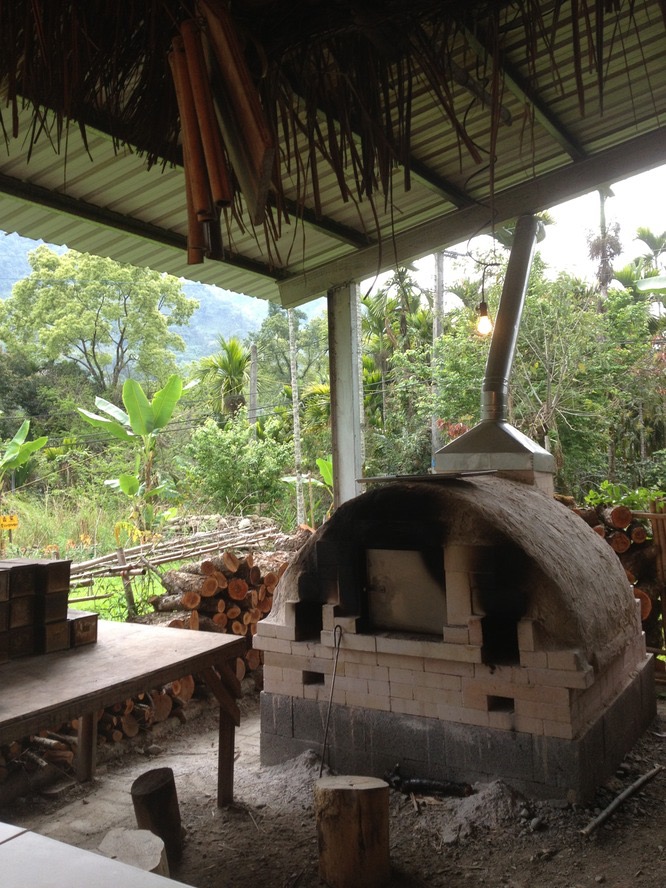
With the Japanese colonial period, there were large changes in cropping patterns – it was then mainly rice grown next to other newly introduced crops (Lin 2007:47). Until the 1970s, mainly crops such as rice and maize were grown. Since 1980, the government has been promoting the cultivation of fruit and vegetables.
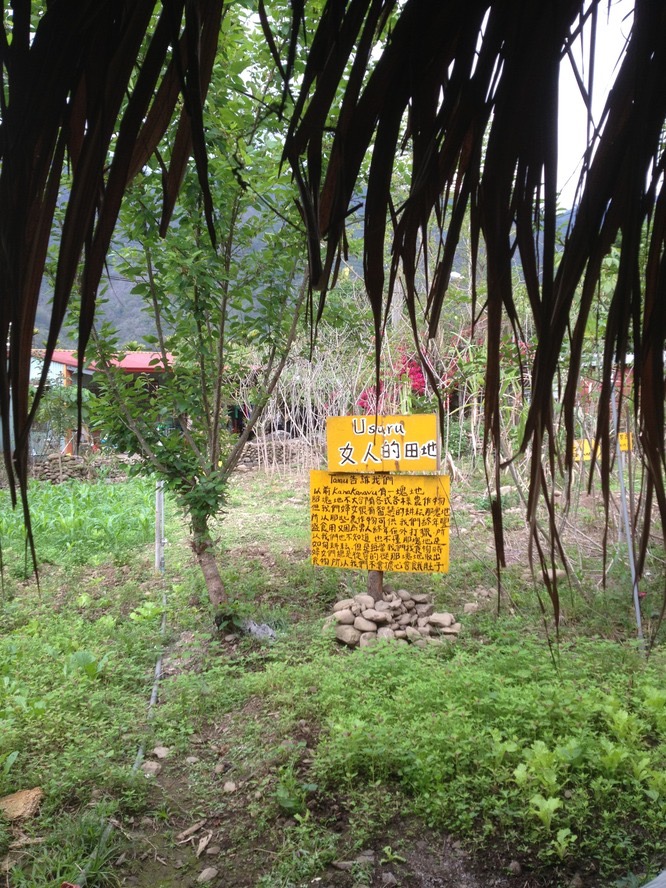
Agriculture is still an important part of everyday life. The Kanakanavu people, even the elderly, still work on their fields to plant fruits and vegetables to sell and for their own consumption. Nowadays, almost every family has at least one car which allows them to drive for shopping. They buy meat (pork, chicken, beef) to cook in their houses. There are some little outdoor restaurants in the village offering Chinese style food. There are several small shops offering bakery products and fast-food products (e.g. instant noodles).
Clothing
The way of clothing in everyday life is not different from the style in the cities: people wear shirts and jeans. During festivals, however, some Kanakanavu dress up in traditional clothing: red jackets and feather hats.
Housing
Taiwan is a seismic region and suffers from severe typhoons every year. Therefore, stone and concrete buildings replaced the old wooden houses in the village. After a devastating flood in 1958, almost all houses were rebuilt, since the location of the settlement changed and the old village split into two settlements.
The old houses were small long houses, but the newly built houses were less traditional. People did not follow old traditions in architecture; e.g. the entrance of the house is not usually related to the cycle of the sun any more (Lin 2007: 177).
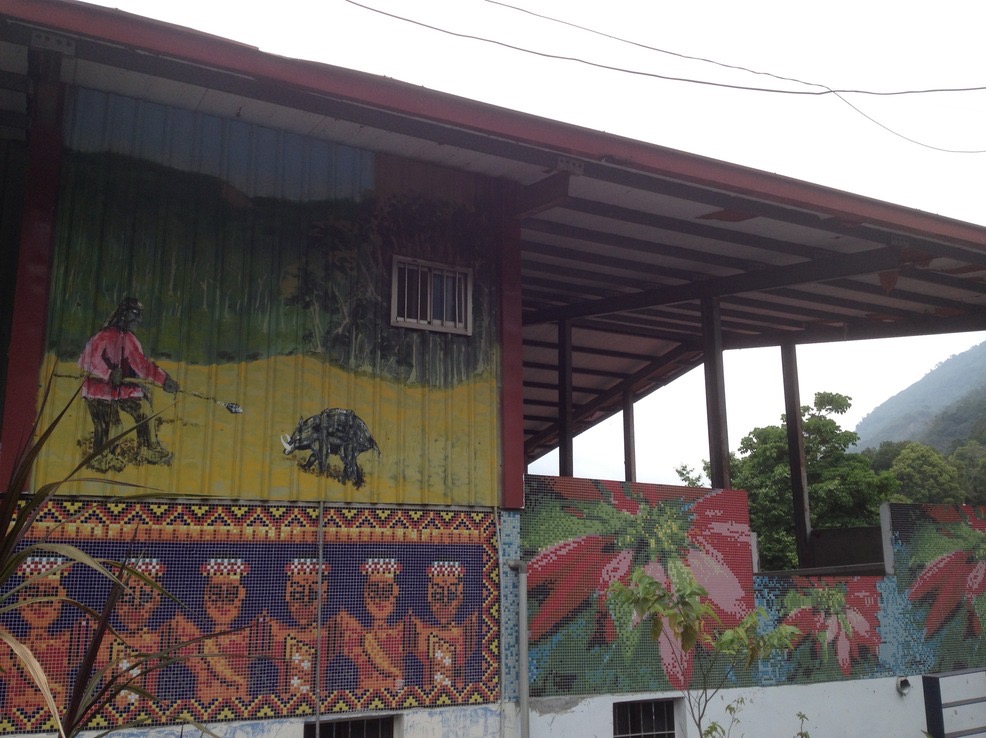
These newer houses are smaller than the ones found in the cities of Taiwan and are home for one family each, but the architecture is very similar to the houses in most of Taiwan’s little towns and villages. However the residents decorate their homes with traditional aboriginal ornaments or inscriptions in their traditional languages, making the look of the houses very unique.
7.2 Life cycle
Pregnancy
Unlike Han people in the cities of Taiwan, many aboriginal people marry young and become parents at a comparably young age. The birth rate in aboriginal communities is higher than in Han dominated communities in the cities.
Infancy, childhood, education, family life
Since many parents work far away from their original homes in the cities of Taiwan, young children stay with their grandparents until they go to elementary school. There is a school in Namasia, however it is in one of the villages down the river, so it is very far for kids from Takanua to get to the school every day. If parents live in the village together with their kids, they usually drive them to school every day. If parents are living and working in the cities, they take their children with them to allow them to go to school, since Taiwan has a compulsory education policy.
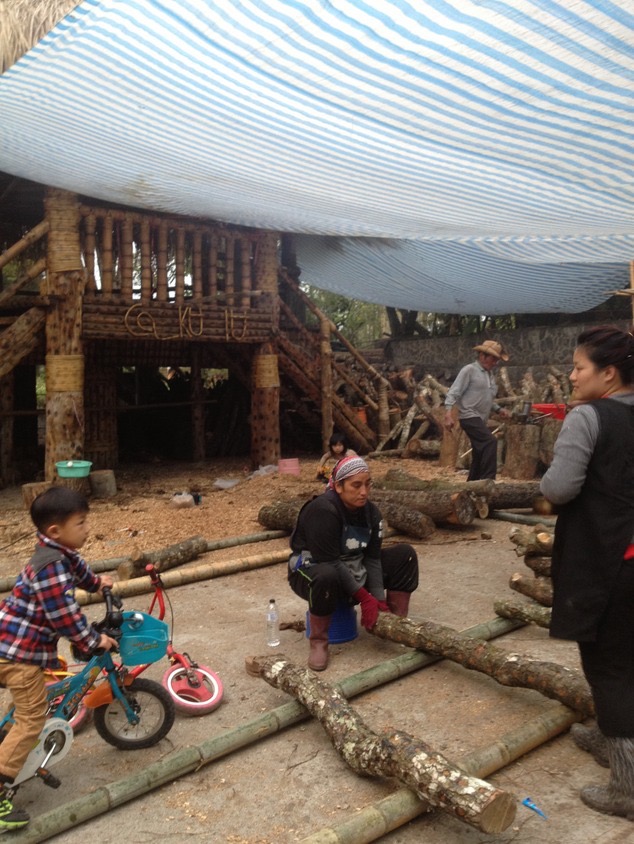
Young aboriginal people have to search for jobs in the cities. The government implemented programs to support the local economy and to develop the tourism sector. However, the area still has only very few companies with jobs and the number of visitors for recreation is still low. Therefore, not many people at the age between 20 and 55 live and work in the area.
Old age
While the younger generation migrates to the cities, the older people remain in the village. Many grandparents look after their grandchildren until they go to school. The elderly are held in very high esteem. The oldest (male) person in a family is the head of the family (tomo). His rank in the family is very high.
Death and burial
Before the Japanese colonization, the Kanakanavu kept the tradition of in-house burials (Lin 2007:168). The Japanese colonial government banned this practice for all aboriginal peoples. Today there are cemeteries in the vicinity of the church.

7.3 Social structure
Classes and ranks
According to Lin (2007:50), the Kanakanavu had hereditary tribal structures, clans and clan leaders. The social system was male dominated and patriarchal.
Family structure
Kanakanavu families are formed by biological relations. The core of the family consists of mother, father and children who live in one house, often together with parents, grandparents or unmarried siblings. Sometimes, even people just working together on the same field share houses (Lin 2007:46). Since the Kanakanavu population is very small compared to the dominant Bunun, usually these groups live together in families due to intermarriage. ‘Pure’ Kanakanavu families, only consisting of Kanakanavu people, are hard to find. The only family we found is the family of Mo’o Ka’angena, where both husband and wife are from Kanakanavu origin. All the other families with Kanakanavu speakers live together with Bunun in mixed families where the majority speaks Bunun in the house. This is one of the main reasons for the rapid loss of the Kanakanavu language.
Village structure
The village structure changed dramatically over the past decades. Before the Japanese colonial period, the people used to live in scattered settlements, near the river or its tributaries and waters. Since the Kanakanavu were fishermen, living near the water was very important. During the Japanese colonial rule, the Kanakanavu were urged to live together with the Bunun people, for whom fishing is not important. The Japanese rulers relocated the Kanakanavu to a village where they had to live in a comparably confined space (Lin 2007:167). After the flood of 1958 new houses had to be built. They were not built according to traditional principles. Therefore, great changes occurred in the village structure (Lin 2007:177).
7.4 Economic structure
7.4.1 Property
The families usually have a small piece of land that they farm themselves, at their home or outside the village. Cultivation of the fields was done by the family, but also non-family arrived as harvest helpers. Some of the crops were then used together. Products of forests and rivers (wild game, fish, wood, bamboo, rattan, forest fruits, etc.) were used by all; there was no separate agreement of the ownership of forest grounds or on the river. Tributaries were used by the families who resided there (Lin 2007:47,48).
Since 1972, Takanua has been connected to the public road and electricity network. Since then, accessibility of the village has been much better, and people have direct access to information through radio and television. This also led to major socio-economic changes in the village and to a market economy (Lin 2007:57). The families now have individual property as in every western society. They own cars and houses. The system follows the Taiwanese system of private property.
7.4.2 Work
Most families plant fruit and vegetable on their land. The fields are not very large, and it is not easy to say if this is enough for a living, but at any rate the people plant for their own consumption.
Some families run small businesses; there are 3-4 little restaurants offering Chinese style food, at least 4 shops offering convenience goods and one guesthouse with little huts. The majority of the working population is, however, employed by Chinese companies in the plains and in the cities, for instance as construction workers or in the service sector. In order to pursue this work, they have to commute or to relocate to the cities.
7.4.3 Traffic and commerce
Before, people lived in scattered settlements and sometimes had to travel long distances on foot. Often they came together only on special occasions (hunting rituals, weddings, warfare). Today there is public transportation and private transport with scooters and cars.
There is only one main road to Takanua village. The area is very remote. Getting to the next bigger town takes more than one hour. Since the last part of the road to Takanua is still under construction, there is no public bus service between the villages. One has to ask for private transportation to get to Jiaxian(甲仙), where the next bus stop is.
There is only one main road to Takanua village. The area is very remote. Getting to the next bigger town takes more than one hour. Since the last part of the road to Takanua is still under construction, there is no public bus service between the villages. One has to ask for private transportation to get to Jiaxian(甲仙), where the next bus stop is.
Commerce is very limited. As already mentioned, there are few shops and restaurants. The next larger commercial area is Qishan (旗山).
7.5 Political structure
Taiwan’s official political name is “Republic of China”; and it now has a multi-party democracy after a long period of colonial past and martial law. Between 1895 and 1945 it was under Japanese colonial rule and was returned to China after World War II.
Before Taiwan became a Japanese colony in late 19th century, it had had a Chinese governmental and tax system. This system was binding on the Chinese and the indigenous population; however, it was complicated for the government to bring the aboriginal population under their control, especially in remote areas. In these areas, aboriginal groups still followed their own lifestyles and had their own political structures. These structures were quite different from each other among the entire aboriginal population.
In the ancient society of the Kanakanavu, elder men had a high degree of influence; they were electable leaders and mighty warriors. Policy makers were clan leaders, military leaders, priests and the elders (Lin 2007:55). During the Japanese colonial period, these were the representative leaders of the group for the Japanese colonial administration. Until today, decisions that affect the group are discussed by the Council of Elders (Lin 2007: 56).
During the time of the Japanese colonial rule, the aboriginal populations were more and more affected by the government: the Japanese rulers wanted to bring all groups under better control. They built roads even to remote areas and installed military divisions to control the plain and the mountainous regions. To make it easier to govern the remote areas and the scattered settlements, they relocated the people and put different groups together in bigger villages. Takanua is one of these villages where different aboriginal groups live together.
After the colonial period and the time of martial law, Taiwan took the path of democratization. Since the 1980s, this also affected the aboriginal groups of Taiwan: More and more groups gained official recognition. Six members in Taiwans Legislative Yuan represent the officially recognized groups.
[1] The term 'genetic' here refers to the relations in a biological sense. The genetic setting (see 'Genetic setting') of the language, however, refers to the linguistic relations among the Formosan languages.
[2] Data from CIP (Council of Indigenous Peoples) from 2009
[3] For more details regarding relations between the Tsouic group see 'Genetic setting'.
© Ilka Wild 2013